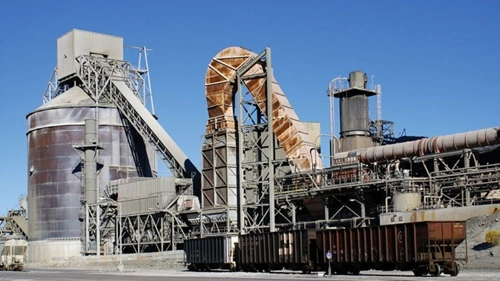It is quite surprising that not a lot of people in India know that we’re actually the 2nd largest cement producer in the entire world. Yes, we’re much over the 410 million metric tonnes mark, which is a huge production amount in itself. And this certainly is a good thing that the production of cement is rising year after year, mainly because of the booming construction scene in the entire nation. But if you look at which states contribute the most in this overall cement production, you’ll see states like Rajasthan and Andhra Pradesh doing super well. And while we’re at it, why not talk about the Top 5 Highest Cement Producing States in India 2025? Alright, here we go then.

1. Rajasthan
The moment you get on the train and head towards Chittorgarh, you’d better not be shocked by a long line of cement factories and the limestone mines that seem to go forever; it’s not only a mere chance, but it is also the explanation of why Rajasthan is still the leader in 2025. Rajasthan is responsible for almost 20% of India’s cement production, with the production of the state reaching an impressive 88.38 million tonnes (MT). The explanation? It is home to the most extensive limestone belts in the country. Moreover, if we take into consideration the low-silica limestone that is discovered in this area and that provides for the manufacturing of stronger cement, you can understand why the state has been on top for so long. Energy is an important factor as well. The energy produced from the huge Bhadla Solar Park, which is located very close, is being used within the area to ensure that the energy cost remains at a low level for the various kilns that are consuming a large amount of power.
2. Andhra Pradesh
Andhra Pradesh can be found in the 2nd place this year with 66.29 MT of cement production. The reason for this is pretty clear. Though AP is not merely a cement-producing state, it is a cement-moving state as well, with the likes of deep-water ports such as Visakhapatnam and Krishnapatnam. This logistics benefit enables it to cover the markets of both the eastern and southern regions of India more efficiently. Additionally, the state is blessed with nearly 33% of the total limestone reserves in the country.
3. Tamil Nadu
We get it, one doesn’t often come across mentions of cement and clean energy in one breath; nevertheless, Tamil Nadu manages to do so and gets the third position with 48.61 MT projected for 2025. One of the unique things about Tamil Nadu is the way the state accomplishes its work, not only through its products. More than half of the 38 GW of installed power capacity in the state is renewable energy, with wind farms such as Muppandal leading the way.
4. Madhya Pradesh
Madhya Pradesh is not the center of media attention most of the time; however, if we talk about natural advantages, then the state is beyond comparison. Also, it is ranked 4th with a production of 44.19 MT of cement in 2025. The Satna-Rewa belt is the lifeblood of MP’s cement industry, the place where they can get limestone right from the earth’s surface, without having to cut a lot. Almost 8-9% of the total cement production of India comes from Satna, which is home to the topmost plants in the country. The Rewa Solar Park (750 MW) is an important factor that adds value to the whole project as it ensures that the electricity supply will not be a problem.
5. Gujarat
In 2025, Gujarat’s cement production was 35.35 MT, which made it the fifth-largest cement-producing state in the country. What sets Gujarat apart from other states is not only its high production but also the fact that it primarily concentrates on the export market, while others are domestically oriented. Gujarat’s cement is not only used in India but is also exported to Middle Eastern and African markets through seaports like Mundra.
Conclusion
In the entire cement industry of India, these are the states that play a super big role, and without a single doubt, whenever there are production problems in any of these states, you’ll see the greater effects of that on the entire industry itself in terms of higher prices and the demand not being met properly.